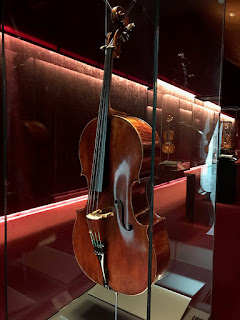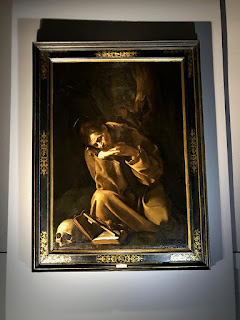Click on any photo to enlarge.
View of Achao on February 7, 1965 from the Cessna 4-seat airplane, traveling from Puerto Montt to the island of Chiiloé, Chile.
Vista aérea de Achao el 7 de febrero, 1965 desde el Cessna de 4 plazos, viajando de Puerto Montt a la isla de Chiloé, Chile.
It was a Friday morning, February 12, 1965 in Castro on the island of Chiloé, where I boarded a small, rural bus that took us to the town of Dalcahue. At the boat landing a small motor launch was waiting to take passengers across the narrow channel, a crossing of five or ten minutes to Quinchao Island. Another rural bus was waiting at the other side. Passing through gently rolling fields and small towns, we arrived at the end of the road in Achao, a village nestled in the green hills at the edge of the sea. All construction in the area is of local wood.
Un día viernes, 12 de febrero de 1965, desde Castro, en la isla grande de Chiloé, tomé una micro a Dalcahue. En la rampa frente el canal, nos esperaba una lancha a motor para cruzar el canal, que demora unos cinco o diez minutos para llegar a la Isla Quinchao. Bajando de la lancha al otro lado del canal, esperaba otra micro y subimos. Pasamos por el lindo paisaje de predios verdes entre pequeños pueblos. Al final del recorrido, nos encontramos en Achao, una pequeña aldea pintoresca encalada entre colinas verdes ubicada a la orilla del mar. Toda construcción en la zona es de madera.

It appears that the locals have not seen many tourists, especially a foreign-looking one, and curious eyes follow me everywhere. Women do not wear shoes, and most carry a black woolen shawl which they use to cover their head when it rains. I struck up a conversation with a farmer from a neighboring island. He tells me that the several surrounding islands are populated and cultivated. They produce their own necessities and a little to sell, but that the price of potatoes is low.
Parece que los lugareños no habían visto muchos turistas, ni menos un gringo norteamericano, y hay ojos que me persiguen dondequiera que vaya. Mujeres del pueblo andan descalzadas, la mayoría con un chal de lana negra, con que se cubre la cabeza cuando llueva. Me encontré con un vecino y nos pusimos a conversar. Me contó que reside en una isla cercana y que todas las islas del archipiélago están pobladas y cultivadas. Producen lo que necesitan para su familia y un poco para vender, aunque el precio de papas es muy bajo.
Walking along the dirt and gravel streets, I found the main plaza and a large, ancient church. It is the oldest church in Chile and was built by the Jesuits beginning in 1730. It looks in poor condition and in need of restoration. Inside, the ceiling is painted blue and white with ornate decorative wood carvings. An old altar remains, but a new one is installed that allows the priest to face the congregation according the recent decision of the Second Vatican Council.
Andaba por las calles de ripio y tierra, y frente la plaza de armas encontré una linda iglesia, la más antigua de Chile. Construida por los jesuitas a partir de 1730, se veía en mala condición y reclamaba por restauración. El techo adentro está pintado en azul y blanco, con decoración adornada de madera. El altar antiguo queda, pero uno nuevo se instaló según el Concilio Vaticano II, para que el sacerdote esté de cara a la congregación.
There are no restaurants in Achao, but I found a rooming house which offered lunch, a delicious mutton stew, about the only thing served in the region apart from fish and potatoes.
No hay restaurantes en Achao, pero encontré un hospedaje que me sirvió un almuerzo, una rica cazuela de cordero, casi lo único que se come acá aparte de pescado y papas.
The main mode of transportation on land is by horse and ox cart, although there were a few pickup trucks in town. A single-mast sloop, unique to the region, carries produce, people and animals between the islands. I watch as firewood is unloaded on to an oxcart on the beach. Another arrived recently with a flock of sheep which were delivered to the small wharf.
El principal modo de movilizarse en tierra es por caballo y carreta, aunque se veían algunas camionetas. Lanchas a vela llevan productos, personas y animales entre las islas. Veo una lancha descargando leña de una carreta de bueyes en la playa, y otra que recién llegó con un rebaño de ovejas, descargando por el pequeño muelle.


It rained intermittingly all day, with some sun, which allowed me to wander around the town and up into the surrounding hills to get some good views of the town and the surrounding islands. There was a hazy view of the snow-covered Andes mountains in the distance. Walking up one hill, I encountered a group of eight children playing, all in their bare feet. They had two small wooden carts used for carrying firewood, and were enjoying playing in the open fields. They looked at me with great curiosity and wonder, and probably without ever having seen a camera or a tall gringo. Somehow, I convinced them to pose for a photo. The photo has become one of my favorites of the trip. I returned to the village several times since then, but in 2025 I met the little girl in the red dress. That story is in my next blog post.
Llovía a ratos por todo el día, con poco sol, lo que me permitía andar por el pueblo y más arriba en los cerros para disfrutar de una vista panorámica del pueblo y las cercanas islas. Apenas se veía la cordillera de los Andes con nieve en la distancia. Caminando por un cerro, me acercaran unos ocho niños jugando, todos a pata pelada. Tenían dos carretas para llevar leña que les servían de juguetes. Me miraban con caras de curiosidad y medio miedo, sin haber visto una cámara fotográfica ni un gringo alto andando solo por el campo. Les convencí a posar para una foto, que ha sido una foto preferida de mi viaje. Volví varias veces al pueblo tras los años, pero en 2025 conocí la niña de vestido rojo. Ese cuento aparece en el próximo post.
I returned to Castro for dinner of mutton stew. I lost seven escudos in the card game that evening.
Volví a Castro para una cena de cordero. Perdí siete escudos en un juego de cartas esa tarde.



























